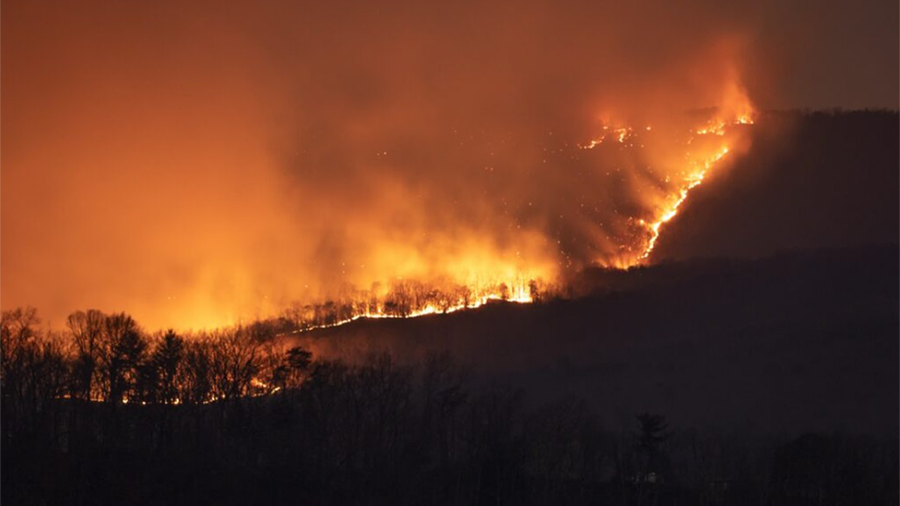Over 100 fires blazed in several parts of the state this week, burning about 7,500 acres throughout parts of Central, Southwest and Northern Virginia. By early Thursday morning, the Virginia Department of Forestry, local firefighter crews and national partners contained about half of them.
This story was reported and written by our media partner The Virginia Mercury
The hotspots for the blazes include the Charlottesville and Roanoke areas, and the counties of Louisa and Rappahannock, said Department of Forestry spokesperson Cory Swift-Turner in an interview. Some fires in Page and Shenandoah counties had grown to consume over 2,000 acres.
A combination of dry conditions, with humidity levels as low as 15% or 20%, and strong winds knocking down utility power lines ignited many of the fires, Swift-Turner said. In Roanoke, a car fire ignited a brush fire that has been contained.
“When we see these weather conditions, the fuels that are usually fueling our wildfires combust very easily,” Swift-Turner said.
Crews focused their firefighting efforts by creating “containment lines,”which are typically six-foot-wide land barriers cleared of dead leaves and other flammable vegetation that fuel the flames. Sometimes a bulldozer is used to create containment lines that are 11 feet across, but mountainous terrain can make it difficult to install those in western regions of the state.
“Sometimes we can’t use the bulldozers,” Swift-Turner said, “so our crews have to go in and carve those containment lines in by hand with tools and it takes more time. It’s dangerous and that can sometimes result in the fires expanding more.”
No injuries by firefighters or civilians had been reported, Swift-Turner said.
Outside of the larger fires in Shenandoah National Park, the conditions aren’t uncharacteristically severe for the spring burning season, which runs until April 30, Swift-Turner added. The state typically sees an average of about 700 wildfires a year, which also includes ones sparked during the fall fire season. By the final days of this past fall season, the department had responded to over 100 fires that burned more than 12,000 acres. The agency states the average number of acres burned per year is about 9,500.
Last year, Virginia’s air quality declined due to wind patterns blowing smoke from the wildfires in Canada down the east coast. Similarly, air quality has decreased in the state due to this week’s fires, with the most hazardous hazes in and around the Shenandoah National Park, including Luray in Page County, said Dan Salkovitz, a meteorologist with the Virginia Department of Environmental Quality.
“Last year, we had really high [levels of unhealthy air quality] over a very large portion of the state,” Salkovitz said. “The area that’s [now] being affected is smaller, but still, for people who live in those areas it can be unhealthy.”
Crews are expected to keep working with the goal of having all the fires contained by the end of the weekend, and their efforts will likely be assisted by the rainfall forecasted to hit the area Friday night, Swift-Turner said. Shifting winds from the southeast should change the drifting pattern of any smoke residing in the air, Salkovitz said. There’s still a risk of new fires, though.
“After we get this rainfall, we could have another period where we have the windy weather and the low humidities,” Swift-Turner said. “And, most likely, we’re only gonna get warmer temperatures. That can further improve conditions for wildfires to start as we go into April.”




